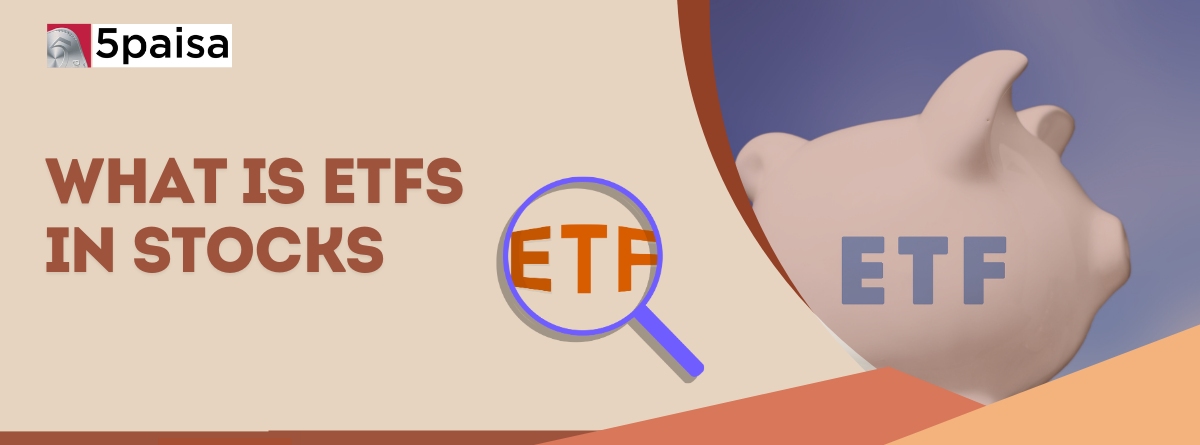Content
- How ETFs Work
- Types of ETFs
- Benefits and Risks of Trading ETFs
- How to Invest in ETFs
- ETFs vs. Mutual Funds vs. Stocks
- Dividends and Taxes
- ETF Creation and Redemption
- Do ETFs Provide Diversification?
- Conclusion
An ETF, or exchange-traded fund, is a collection of assets that are exchanged on the stock market, similar to stocks. Shares, bonds, and derivatives may all be bought and sold via exchange-traded funds, which combine the financial resources of several investors and invest them in different transferable monetary assets.
All ETFs in India must be registered with SEBI before they can be listed and traded on stock exchanges. Investors with little knowledge of the stock market may find this alternative intriguing. So, if you are wondering how ETFs work, this post might be right up your alley. Moving forwards, we’ll be analyzing the working of ETFs and the various types of ETFs you can invest in.
More Articles to Explore
- Difference between NSDL and CDSL
- Lowest brokerage charges in India for online trading
- How to find your demat account number using PAN card
- What are bonus shares and how do they work?
- How to transfer shares from one demat account to another?
- What is BO ID?
- Open demat account without a PAN card - a complete guide
- What are DP charges?
- What is DP ID in a demat account
- How to transfer money from demat account to bank account
Disclaimer: Investment in securities market are subject to market risks, read all the related documents carefully before investing. For detailed disclaimer please Click here.
Frequently Asked Questions
Yes, ETFs can pay dividends. They distribute earnings from the underlying stocks or bonds they hold to investors, typically on a quarterly basis, based on the ETF’s performance.
ETFs offer diversification, cost efficiency, and flexibility by tracking indices like Nifty or Sensex. They suit passive investors seeking market-like returns with lower expense ratios.
ETFs often have lower fees and trade like stocks, offering flexibility. However, mutual funds provide professional management and may be better for the long term. The choice depends on your investment goals and preferences.
ETFs trade on stock exchanges, offering real-time prices and lower costs. Mutual funds are priced once daily and offer active management. ETFs suit passive strategies; mutual funds can outperform markets.
Investing in ETFs can be a good choice due to their low costs, diversification, and ease of trading. They are suitable for both beginners and experienced investors seeking broad market exposure.
Costs include expense ratios (usually lower than mutual funds) and brokerage fees for buying/selling. In India, ETFs often cost less than 1% annually, making them economical.
No, ETFs in India also include gold, bonds, and thematic funds. They offer exposure to various asset classes, catering to diversified investment needs.
ETFs have a predetermined creation basket and a highly transparent portfolio holding. This enables arbitrageurs to use the in-kind creation/redeemation method to produce and redeem units daily. By engaging in arbitrage between the ETF and its underlying portfolio, these arbitrageurs are continually looking to profit from any notable premium or discount between the ETF market price and its NAV.
Liquidity stems from underlying assets and trading volumes. Even if trading volumes are low, Authorized Participants ensure efficient price discovery by creating or redeeming ETF units.
Both track indices, but ETFs trade on exchanges with real-time prices, while index funds are bought or sold through fund houses at NAV. ETFs offer better liquidity.
Tracking error measures how closely an ETF follows its benchmark index. In India, a lower tracking error is preferred, ensuring closer alignment with the index's performance.
Look at expense ratio, tracking error, liquidity, underlying index performance, and fund house reputation. Align your choice with financial goals and risk appetite.
Buy ETFs through a Demat account via stock exchanges. Use SIPs for regular investments or lump sums for tactical moves. Monitor liquidity and market conditions for strategic entries.
ETFs are diversified funds that trade like stocks on exchanges, tracking indices or assets. Shares represent ownership in a single company. ETFs offer diversification, while shares involve concentrated investment in one entity.



